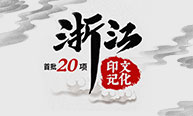Chinese writing brush manufacturers seek revival
HANGZHOU - In a township around 60 kilometers from the city of Hangzhou, home of e-commerce giant Alibaba, a group of Chinese ink brush manufacturers are struggling to survive at a time when humans are slowly forgetting how to write by hand.
Ma Wanbiao, 30, quit his job at a telecom company to work at his father's writing brush factory in Shanlian Township, his hometown as well as the traditional home of Chinese ink brushes.
"I don't know how to make writing brushes. To be honest, the job is not profitable," said Ma.
However, after watching his father strive year after year to keep the factory alive, he decided to help.
"Traditional Chinese heritage should be inherited," he said.
As one of the "four treasures of the study," a Chinese term which refers to the ink brush, inkstick, paper and inkstone used in calligraphy, the brush is a traditional artist's tool.
The writing brush industry peaked during the 1980s and 1990s, with around eight million brushes being produced in Shanlian each year, accounting for 20 percent of the total sales in China.
The Shanlian Brush Factory, where Ma works now, had more than 500 workers in those days. Ma and his peers still recall the familiar scent of their childhood, a mixture of glue, wool and timber.
"In the past, people thought that it was a great honor to work in the factory," said Wu Zhengyi, 53, as he used a knife to engrave a well-known poem on a brushholder under the light from a table lamp.
"A quality writing brush could sell for $4 in those days. The factory's net income reached 1.2 million yuan annually," said Ma Zhiliang, Ma Wanbiao's father, who runs the factory.
In a four-story building, the elder Ma lit a cigarette and recalled his first day working in the factory in 1979. His father set up Shanlian Writing Brush Factory in 1950s.
According to Ma Zhiliang, it takes more than 100 steps to make an ink brush. The brushes are made from the hair of an animal such as a goat or rabbit. The brush handle is often constructed of bamboo, although materials such as jade or ivory also can be used.
However, its functions have been gradually limited to art with the increasing use of mobile phones and computers for writing, leading to a general degradation in handwriting abilities.
"Many workers have retired. I am the only one who engraves characters on the brushes at this factory. My work is mostly appreciated as art," said Wu.
He started to study engraving at the age of 18, but he worries that the skill will not be handed down to the next generation now that laser inscription equipment has gradually replaced manual engraving.
In addition to the influence of modern technology, Ma Zhiliang said a lack of apprentices due to low pay and arduous working conditions also poses challenges to future of the industry.
The situation facing the writing brush industry has also been encountered by many traditional Chinese products. They are trying to find a new way to keep the skills alive.
In 2006, the Huzhou style of making writing brushes was added to China's list of intangible cultural heritage. Huzhou is the city which administers Shanlian.
The city government set up an organization dedicated to saving the traditional technique, which has registered it as a trademark.
In June 2015, the Zhejiang provincial government decided to turn Shanlian into a tourist destination. The formerly scattered ink brush workshops were relocated to one street.
As well as government support, the manufacturers themselves have also been making changes. They have given writing brushes new functions as souvenirs and gifts.
Many Chinese treat an infant's first haircut as a significant milestone, and ink brushes made of hair from that first haircut have become an emerging product for the industry.
"Many parents send their child's hair to my workshop to be made into an ink brush," said Wang Ronger, owner of Yongxin Ink Brush Workshop.
Wang said other customers have purchased writing brushes as gifts for their wedding anniversaries.
Ma Zhiliang have started developing customized ink brushes for calligraphy fans. For example, he adjusts the flexibility of the brushes according to customers' needs.
He has not rejected the growth of the Internet, and his factory has set up several stores on China's online shopping sites such as Taobao.
"Some customers tell me to maintain the traditional skills and not to follow fashions, while others asked me to seek change and develop new products," said Ma Zhiliang. "The two opinions are not contradictory."
Months ago, a group of teachers and students from France visited Shanlian. They listened to the history of Huzhou writing brushes and showed great interest.
For Shen Heyun, owner of Side Ink Brush Workshop, the increased international interest in Chinese classics and culture, and the building of Confucius Institutes worldwide are good opportunities for the revival of the writing brush industry.
"As long as Chinese culture exists, the writing brush will not perish," said Shen.

 Print
Print Mail
Mail
 20 Cultural Symbols
20 Cultural Symbols Why Zhejiang
Why Zhejiang Experiencing high-tech products at WIC
Experiencing high-tech products at WIC Zhejiang Release
Zhejiang Release Zhejiang News
Zhejiang News